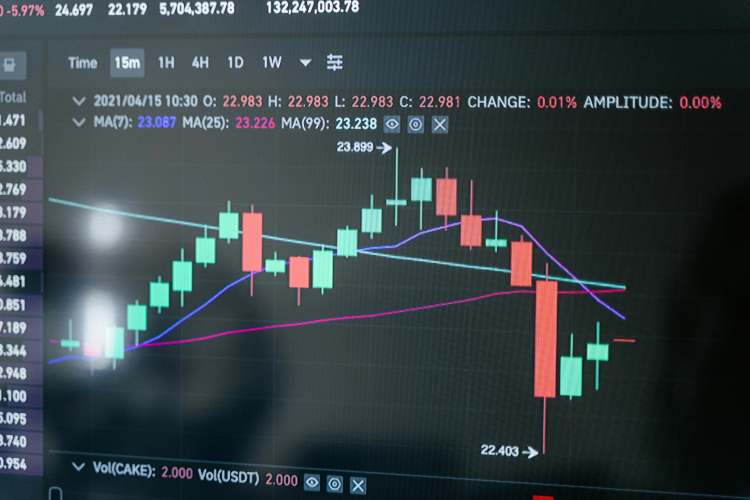
The Economic Survey 2024-25 has raised concerns about a potential deep correction in the Indian stock market, emphasising the risk posed by high valuations and the increasing participation of young retail investors. While India’s stock market has demonstrated resilience in recent years, the interplay between global economic conditions and domestic market fundamentals presents both challenges and opportunities. Here’s a look at whether the worries about a correction real, what are the factors that determine current market trends, and how investors can negotiate uncertain times.
Over the past few years, Indian stock markets have reached unprecedented highs, supported by a sharp increase in retail investor participation. According to the Economic Survey, the number of investors has surged from 4.9 crore in FY20 to 13.2 crore as of December 31, 2024. This influx of new, young investors, many of whom have never experienced a prolonged downturn, has been a key driver of bullish market sentiment.
However, this optimism could be tested in the event of a global correction. Historical data suggests that the Nifty 50 has shown strong correlation with the S&P 500, with corrections in the US market often triggering declines in Indian equities. Although the past few years have seen a decline in the five-year rolling beta between the Nifty 50 and the S&P 500, the risk of a cascading effect remains significant.
READ I Economic Survey 2024-25 lists India’s strengths, weaknesses
US market may see a correction
The Economic Survey warns that the elevated valuations in the US market increase the likelihood of a meaningful correction in 2025. The S&P 500 has posted strong returns over the past two years, with technology stocks leading the charge.
The Federal Reserve’s December 2024 announcement that it would slow the pace of rate cuts has already rattled markets, highlighting the potential for volatility ahead. If a major correction unfolds in the US, the impact on India could be substantial, given the interconnected nature of global capital markets.
One argument against the likelihood of a deep correction in Indian markets is the increasing resilience to foreign portfolio investor outflows. For instance, in October 2024, despite FPIs withdrawing $11 billion, the Nifty 50 only declined by 6.2%, a far more muted reaction compared to the 23% crash in March 2020 when FPIs pulled out $8 billion.
This resilience is attributed to strong domestic institutional support, a growing retail investor base, and structural reforms that have enhanced market stability. However, the Economic Survey cautions that historical trends cannot be ignored—market movements in the U.S. have consistently influenced Indian equities, with asymmetrical downside risks.
Sectoral trends and the risk of overheating
The Indian market’s recent gains have been driven by key sectors such as banking, manufacturing, pharmaceuticals, chemicals, and IT. However, premium valuations suggest that certain segments may be overheating. The one-year forward price-to-earnings (P/E) ratio of 20x is well above historical averages, raising concerns about sustainability.
Analysts have also pointed to high food inflation, driven by El Niño effects, as a potential risk to market sentiment. If inflation remains elevated, it could limit the Reserve Bank of India’s ability to cut interest rates, which could further pressure equity valuations.
Investment strategies in a volatile market
Given the risks of a potential correction, investors must adopt a prudent approach:
Diversification is key – Experts recommend a well-balanced portfolio that includes large-cap, mid-cap, and small-cap stocks, along with exposure to debt, real estate, and commodities to hedge against market volatility.
Focus on fundamentals – Investors should steer clear of stocks with questionable financials, as they tend to fall sharply during market downturns. Instead, accumulating shares of fundamentally strong large and mid-cap companies with pricing power and solid balance sheets can provide stability.
Stick to asset allocation – Maintaining a disciplined approach to asset allocation, with periodic rebalancing, can help mitigate risks. A recommended mix for 2024 includes 50% large-cap, 20% mid-cap, and 30% small-cap exposure.
Avoid panic selling – Market corrections are part of long-term investing. Investors should continue their systematic investment plans (SIPs) irrespective of short-term fluctuations, using dips as opportunities to build positions.
While the Indian stock market has shown remarkable resilience, the concerns outlined in the Economic Survey 2024-25 cannot be dismissed. A global market correction, particularly in the US, could impact Indian equities, but strong domestic economic fundamentals and increased local investor participation may provide a cushion against extreme downturns.
Rather than predicting a catastrophic collapse, the likely scenario is a controlled correction or consolidation, where overvalued stocks see adjustments while fundamentally sound companies continue to perform. Investors who remain disciplined, diversified, and focused on long-term growth will be best positioned to navigate market uncertainties in 2025 and beyond.
